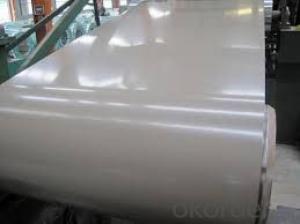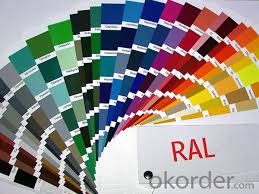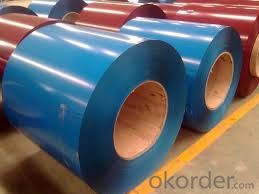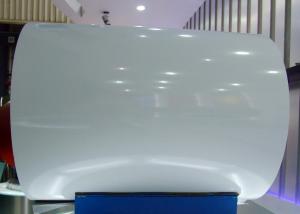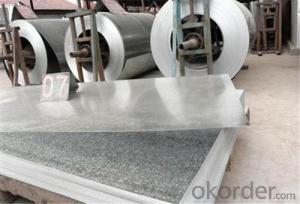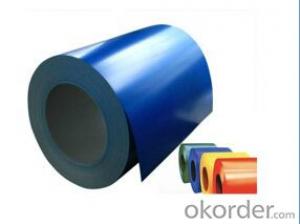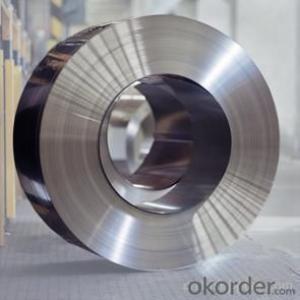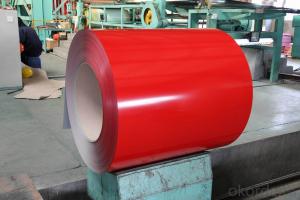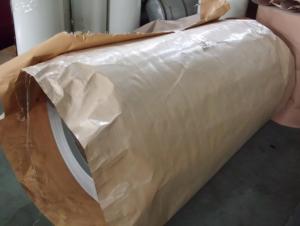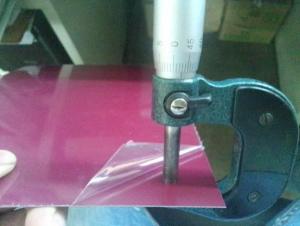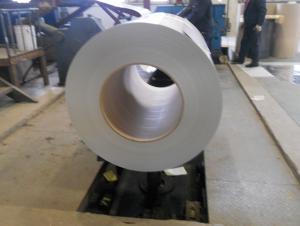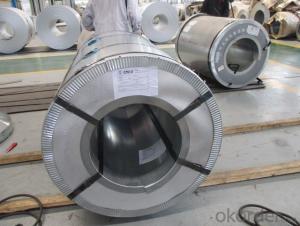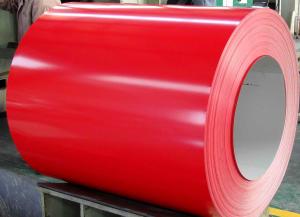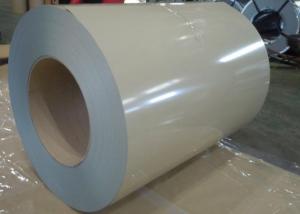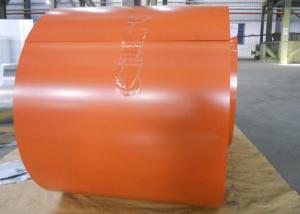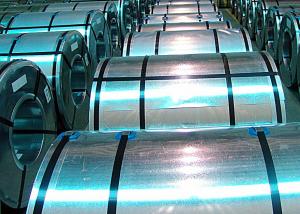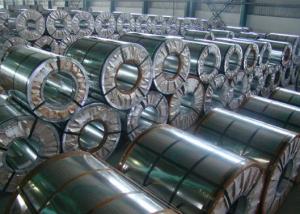Prepainted Cold Rolled Galvanized Steel Sheet Coil JIS G3312-2012
- Loading Port:
- Shanghai
- Payment Terms:
- TT OR LC
- Min Order Qty:
- 25 m.t.
- Supply Capability:
- 9000 m.t./month
OKorder Service Pledge
OKorder Financial Service
You Might Also Like
Product Description
1. Galvanized steel coil simple introduction:
Galvanized steel coil means that steel coils has gone through a chemical process
To keep it from corroding, so this protective metal, zinc layers, does not get rusty as easily. The coating also gives the steel a more durable, hard to scratch finish.
(1)Thickness:0.14-1.2mm
(2)Width:600-1250mm
(3)Material:SGCC,DX51D,S350GD,SPCC,CGCC
(4)Zn:40-275gsm
(5)Surface:oiled,chromated
(6)Application: Corrugated,Wall,Roofing,Structure and so on
2. Galvanized steel coil technical processing:
1)Uncoiled and sheared
2)Cleaned using a caustic solution, which can remove oil/grease, dirt, and paint
3)Entry looper to revised and then annealing furnace
4)Steel is dipped into the molten zinc bath
5)Cooled in a quench tank to reduce its temperature
6)Post treatment and crimper
3. Galvanized steel coil quality control:
Strict procurement process---skillful technical workers---final products inspection
(resistance to corrosion, salt spray test, exposure test, machinability, thermal resistance)
---standard packing
4. Galvanized steel coil advantages:
1)Zinc coating has good adhesion
2)Resistant to corrosive factors
3)High strength&quality
4)Strict quality control system
5)Standard export sea-worthy packing
5. Why choose us?
1).Advantages: We have two production line of PPGI and two lines for the galvanized steel coil, total yearly output is about 500000mt Also we have 56 professional salesperson from three international sales department, a group of technical engineers
And skillful quality control inspector.
2). Special technology support: We have two production line of pre-painted steel coil
And two lines for the galvanized steel coil, total yearly output is about 500000mt. In
Order to meet our customers new requirements, We also can manufacture the special
Products, such as Printed, Filmed, Pressed, Matte steel coil and the full hard G550
Galvanized steel and galvalume steel.
3). Conform the international quality standard: All products for export, according to the
International quality standard of Europe, Japan, Russia and America to produce.
Item: | Galvanized Steel Coils |
Material: | SGCC, SGCH, SPCC, SGCD, DX51D+Z, STO2Z,DX54D,DX51D |
Thickness: | 0.14mm-1.2mm |
Width: | 762-1250mm |
Length: | Coiled or as requested |
Surface: | Galvanized,oiled,chromated |
Application: | Industrial panels, roofing and siding for painting |
Types: | Commercial / Drawing / Deep Drawing / Structural quality |
Zinc coating: | Z40-275g/m2 |
Surface Treatment: | chromed / skinpass/ oiled/slightly oiled/ dry/ anti-fingerprint |
Surface Structure: | zero spangle / minimized spangle / regular spangle/ big spangle |
Coil Weight: | 3-10 ton per coil |
Payment term: | T/T,L/C |
Packing information: | Export standard package :bundled wooden box or be required; The inner size of container is below: 20 ft GP:5.8m(length)x 2.13m(width)x 2.18m(high) about 24-26 CBM 40 ft GP:11.8m(length)x 2.13m(width)x 2.72m(high)about 68 CBM |
Port: | Qingdao,Tianjin port |
Delivery time: | 15-20 days,after we received your deposit |
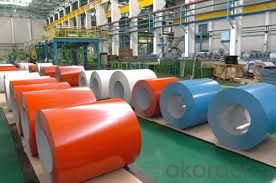
- Q: What are the different types of steel coil cutting processes?
- Various industries utilize several different steel coil cutting processes. These processes include: 1. Shearing: The most widely used and simplest method of steel coil cutting involves utilizing a shear blade to cut the coil material into desired lengths. This can be done either manually or with the assistance of automated machinery. 2. Slitting: A process designed to cut wide coils into narrower strips, slitting involves passing the coil material through a set of circular knives that cut the steel into smaller coils or strips of the desired width. 3. Laser cutting: Renowned for its precision and efficiency, laser cutting involves using a high-powered laser to melt or vaporize the material along a predetermined path. This method is commonly employed for intricate designs or when high accuracy is required. 4. Plasma cutting: Another method of cutting steel coil involves using a plasma torch that generates a high-velocity jet of ionized gas to melt the material. Plasma cutting is known for its speed and ability to cut through thick materials. 5. Waterjet cutting: This process utilizes a high-pressure stream of water mixed with abrasive particles to cut through steel coil. Waterjet cutting is frequently chosen when the material being cut is sensitive to heat or when precision is necessary. 6. Saw cutting: A traditional cutting method, saw cutting involves using a saw blade with teeth to cut through the material. It is particularly effective for thicker materials and can be performed manually or with the aid of automated machinery. These represent just a few of the many steel coil cutting processes commonly employed. The choice of cutting method relies on several factors such as the material's type and thickness, desired accuracy, speed, and cost-effectiveness.
- Q: I was looking at my Great-Grandfather's immigration form from when he immigrated from Scotland and he listed his occupation as a steel dresser. What does a steel dresser do?
- The steel dresser was a person who would clean the freshly made cast steel pieces at a foundry/ steel factory. Usually when the steel comes out it will have some extra bits and pieces sticking out that need to be removed. The steel is melted and cast into shape so there will be like a little raised line where edges of the mold met or a few blobs sticking out where the hot steel dripped over the edge or something. The dresser was the person who got rid of that kind of stuff to make a more finished/even product.
- Q: How are steel coils used in the manufacturing of construction scaffolding?
- Steel coils are used in the manufacturing of construction scaffolding to create the main structural framework. These coils are often formed into tubes or rods, providing strength, stability, and durability to the scaffolding structure.
- Q: Im in the process of replacing the gutters/down spouts on my house. The top of the house is four sided. The bottom level has a porch area with 3 sides, two smaller roofs in the back, and one small roof on the side with all stainless steel gutters. A two story house. Not sure of the demensions. They were made at a Steel Mill where the previous owner, worked.This guy wants to buy the stainless gutters but I need to know the market value of this steel and offer him a price. Can someone tell me what I can sell it for? Does it go by the pound? Foot? Can you give me an idea please? Theres a lot of it! I have no clue what to do! Thanks!
- Steel is at an all time high of $3.99 per hundred pounds..Stainless will sell for more....I haulled a pickup truck full 3 days ago and got over a 100 bucks for junk I had laying around the yard.
- Q: How are steel coils used in the manufacturing of roofing materials?
- Steel coils are used in the manufacturing of roofing materials as they serve as a primary raw material for producing metal roofing sheets and tiles. These coils are processed through a series of steps such as cleaning, coating, and shaping to create durable and weather-resistant roofing products. The steel coils are rolled out and cut into the desired size and shape, ensuring uniformity and precision in the manufacturing process. These roofing materials made from steel coils offer exceptional strength, longevity, and protection against various weather conditions, making them a popular choice for residential and commercial buildings.
- Q: does he use a nylon guitar or steel?
- Clearly it's nylon strings. Didn't you ask this before? You can hear the difference in tone, and the construction of the guitar is different than a steel stringed model.
- Q: How are steel coils used in the manufacturing of airbags?
- Steel coils are used in the manufacturing of airbags to provide stability and structure. These coils are typically placed inside the airbag module to ensure proper deployment and inflation during a collision. The steel coils help maintain the desired shape and prevent the airbag from collapsing, allowing it to effectively protect the occupants of a vehicle in the event of a crash.
- Q: What are the disadvantages of using steel coils?
- One disadvantage of using steel coils is their high weight and bulkiness, which can make transportation and handling more difficult and costly. Additionally, steel coils are prone to rust and corrosion, requiring proper maintenance and protective coatings to prevent deterioration. Lastly, steel coils can be expensive to produce and purchase, making them less cost-effective compared to alternative materials in certain applications.
- Q: I downloaded broken steel, the notice of my level cap raising was shown, but after reaching the Jefferson Memorial (when you are supposed to activate the purifier) if I kill Colonel Autumn, then Lyons simply says that we must secure the area, and I can't complete the mission. If I let Autumn live, then she gets stuck in a loop saying Steel be with you over and over. Has anyone else experienced this/how can I fix this? I paid $10 for the expansion and I'm getting ripped off.
- for my area i've got in no way stricken with achievements. Hell, i've got in no way logged into domicile windows stay in six months for the reason that this game got here out. i do no longer even have the disk in my laptop. I merely launch by FOMM and FOSE. you already know what achievements i like, making mods. human beings love a number of my mods, and to me this is a real success. the sport is merely game, enjoying it would not recommend something, this is different from you lived in SE Asia for 6 months in a shack with out working water with a warm distant places female you met on line and then introduced her and your toddler back to stay inclusive of your mom, no, you haven't any longer achieved something different than to be entertained by skill of somebody else's success. Oh, specific you have solved some mysteries, explored some areas and located some issues that have been hidden, yet you likely regarded up on line the places for lots of the stuff you discovered besides. Oh, and to respond to your question: Bethesda's engaged on it, alongside with fixing the a million.5 replace that kills mods with outdoors adjustments by skill of making the sport crash on shop.
- Q: My teacher says if they were that they would still be standing today. I'm not sure if he means the reinforced steel in the concrete beams, columns etc or if the whole beams and columns floor etc were were made of reinforced steel.
- There is no way you could make a 110 floor building out of concrete.
Send your message to us
Prepainted Cold Rolled Galvanized Steel Sheet Coil JIS G3312-2012
- Loading Port:
- Shanghai
- Payment Terms:
- TT OR LC
- Min Order Qty:
- 25 m.t.
- Supply Capability:
- 9000 m.t./month
OKorder Service Pledge
OKorder Financial Service
Similar products
Hot products
Hot Searches
Related keywords
